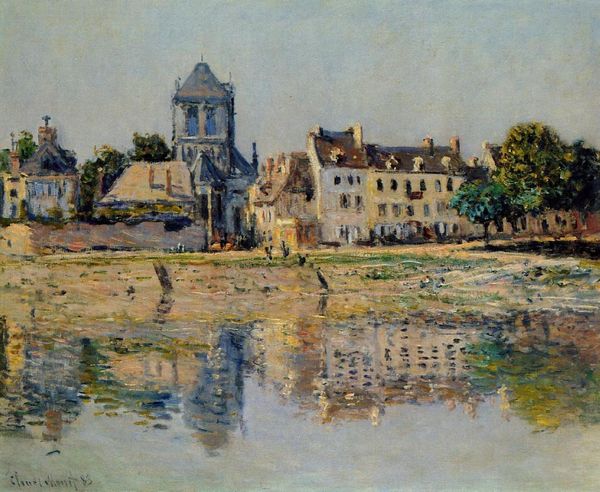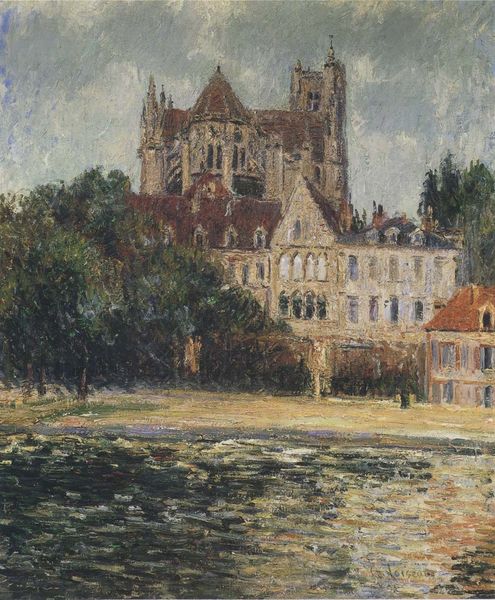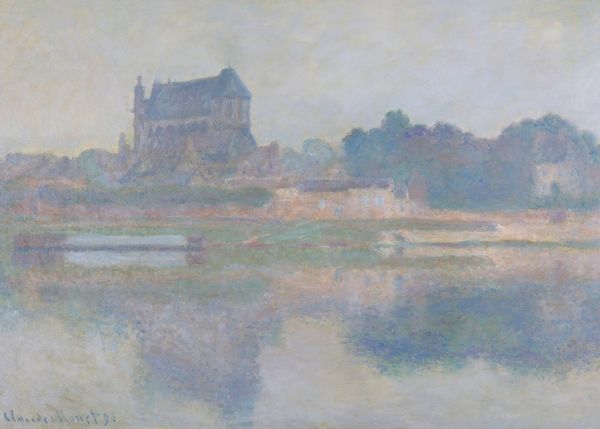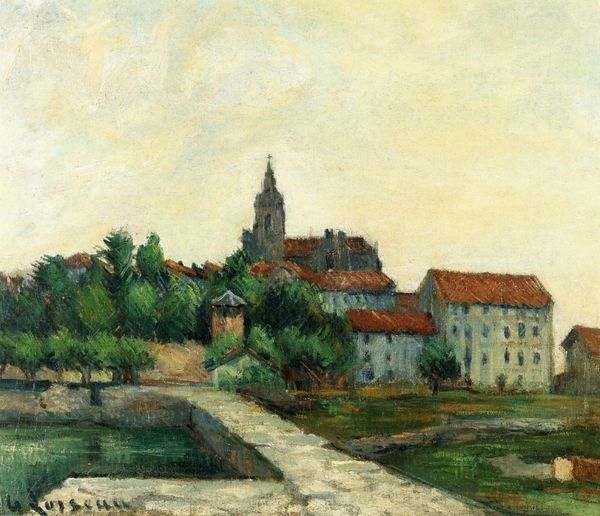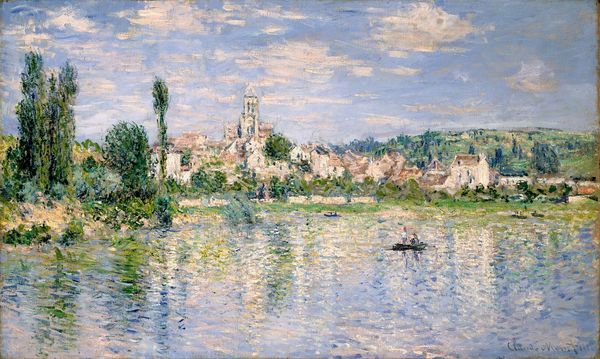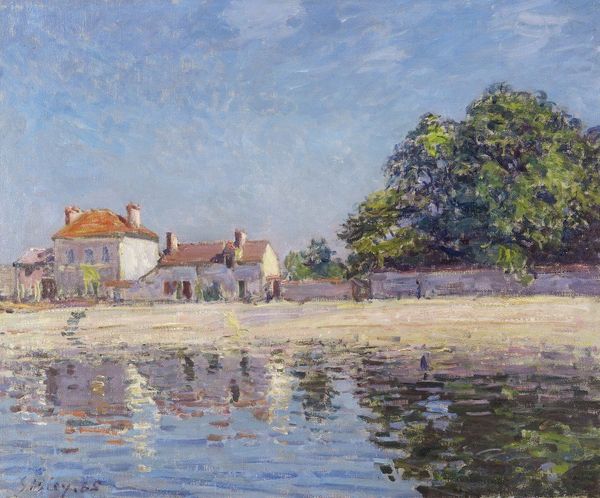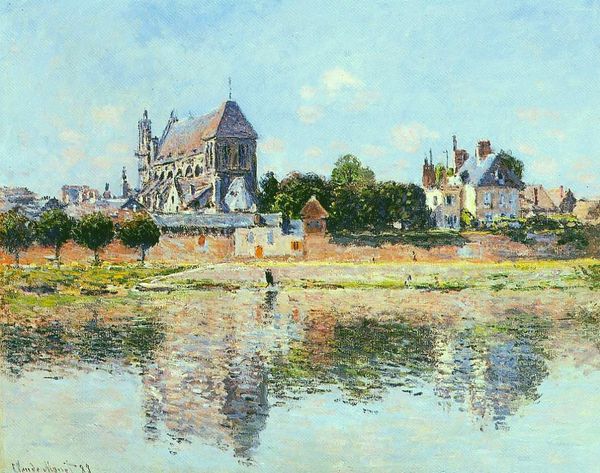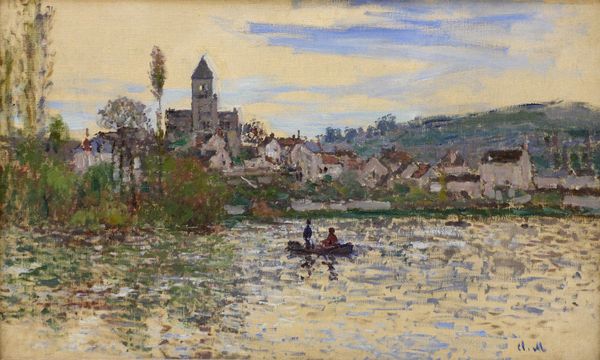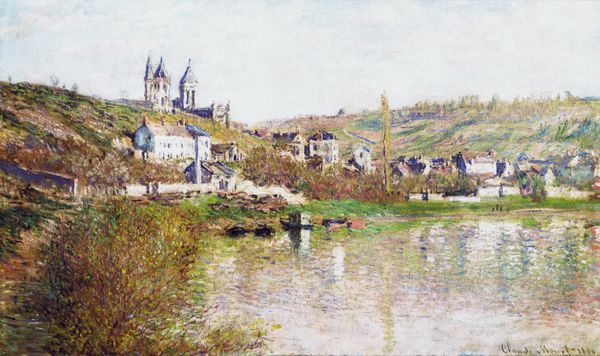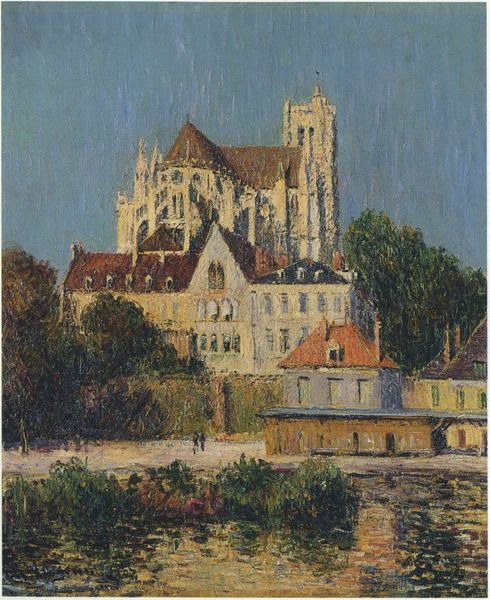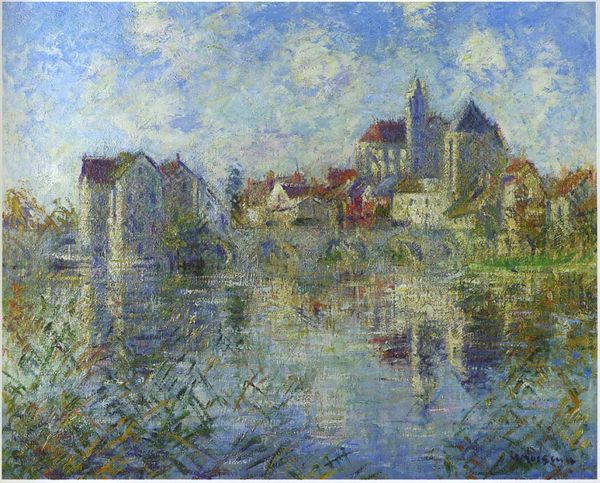
Copyright: Public domain
Claude Monet painted The Church at Vetheuil with oil on canvas to capture the essence of the French countryside. Monet's work reflects a shift in the late 19th century, moving away from academic traditions towards personal sensory experiences. The church in Vetheuil acts as a focal point, grounding the composition amid fluid brushstrokes and shimmering reflections. We see a burgeoning railway network which enabled artists to move easily to rural locations. Monet here captures the appeal of the countryside, away from the industrialising cities. To fully appreciate Monet's oeuvre, we must consider the institutions that upheld artistic standards and tastes. Impressionism challenged these norms, often facing rejection from the established Salon system. Close examination of letters, exhibition catalogs, and critical reviews allows the historian to trace Impressionism’s gradual acceptance. It reveals how social forces shape artistic value.
Comments
No comments
Be the first to comment and join the conversation on the ultimate creative platform.
